Nature Heals
What are we looking for and does nature have the answers?

It's Just You
Pam Bice finds solace from grief searching the waterways of Ohio
The water level is waist high by the time Pam is halfway across the river. It’s early April, and the cold water bites at her legs. Even through the thick rubber of her new waders, Pam’s toes have gone numb.
Weighed down by a twenty pound backpack full of sea glass and rocks, she knows that the only way to the other side is through. So, she takes another step. Woody debris and sediment churn in the undertow, making it impossible to see the rocky floor. She places her foot down, and slips. Then she’s completely submerged.
The river sweeps Pam downstream. Her waders, now full of water, drag her under. She gasps for air, choking down mouthfuls of water. Pam feels herself losing strength.
In desperation, she reaches for the branch of a fallen tree. She clutches it, and stays there for a moment as water pours over her shoulders. After a few deep breaths, Pam hoists herself onto the tree’s moss-covered body.
She lies there, drenched and shaking, as the river resounds through the forest.
Pam Bice is the librarian at Granville Middle School. It’s her first year on the job, but she is used to being around students. Pam was an English teacher for thirty years, so when she got asked to become an “experiential learning specialist,” a fancy term for librarian, she was excited about the opportunity.
“It’s pretty awesome” she says with a smile as she leans back in her chair.
The bookshelves behind Pam are stacked with colorful spines. Four big, orange letters are spaced across the top, spelling out “read”— a reminder for the students who work at the tables in the middle of the room.
There are no windows in the library. The space is illuminated by fluorescent overhead lights, the kind you would find in a hospital waiting room.
Pam tells me that the superintendent wants to put in skylights, but doing so requires a levy. It’s challenging to get things approved at a public institution, but that doesn’t stop Pam. She wrote the grant to put in benches which sit outside the front of the school. Now teachers can hold classes outside and students can have a place to sit in nature.
“I always get really happy when I see kids sitting there,” she says, placing her hand over her heart.
Pam loves spending time outside. She and a coworker walk laps around the building on their free period just to get a moment with nature. But her true passion is being on the water.
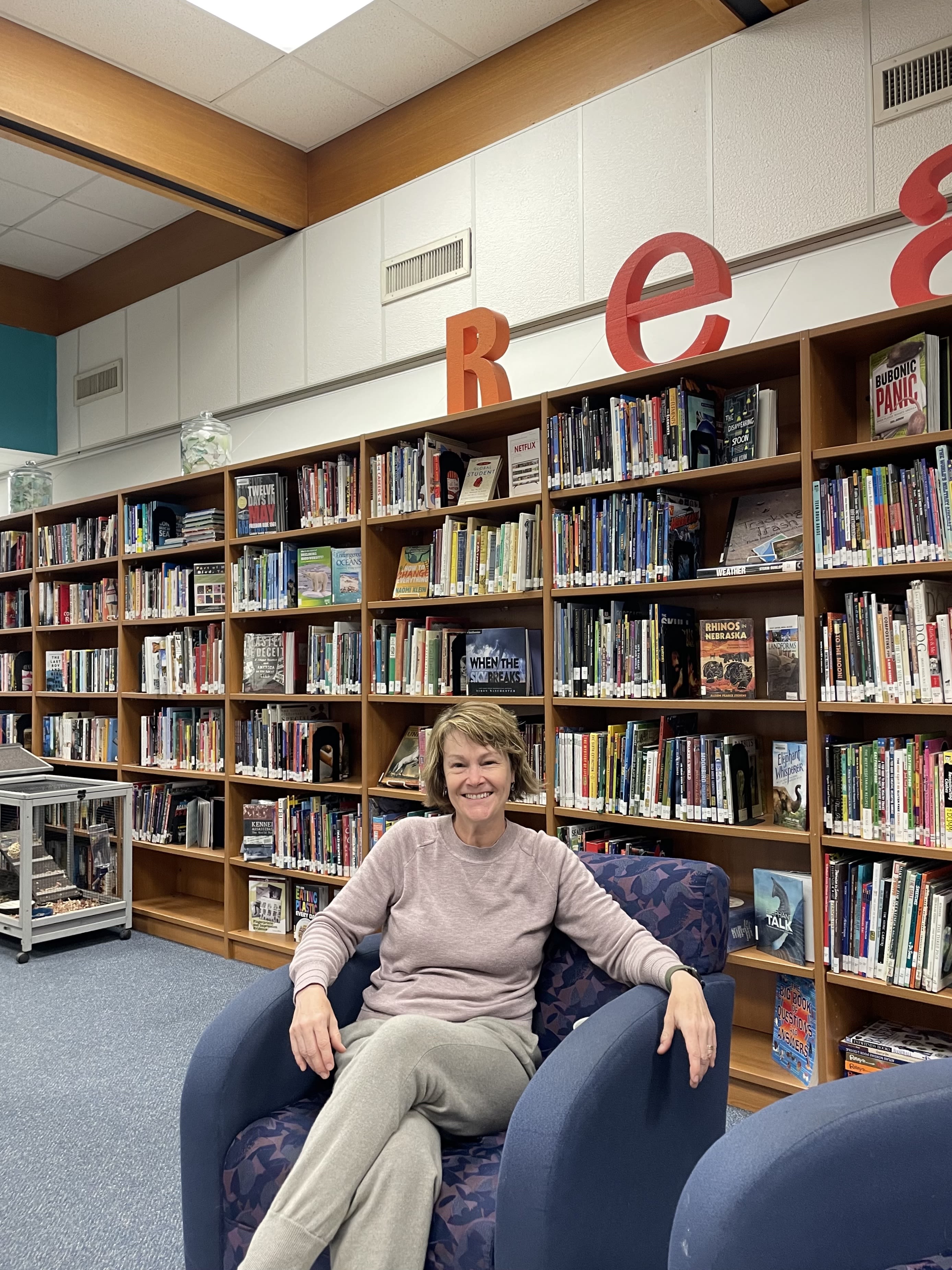
Spending a moment in nature during our busy days is important and has the power to help us manage stress. Jack Wheeler, the Associate Director of Student Wellness at Denison University, knows this well. He introduced eco-therapy and adventure therapy programs on campus to promote relationships between students and the outdoors.
In this audio story, Jack reflects on some of his own formative experiences with nature and tries to help Denison University students decompress on one of his mindfulness hikes.
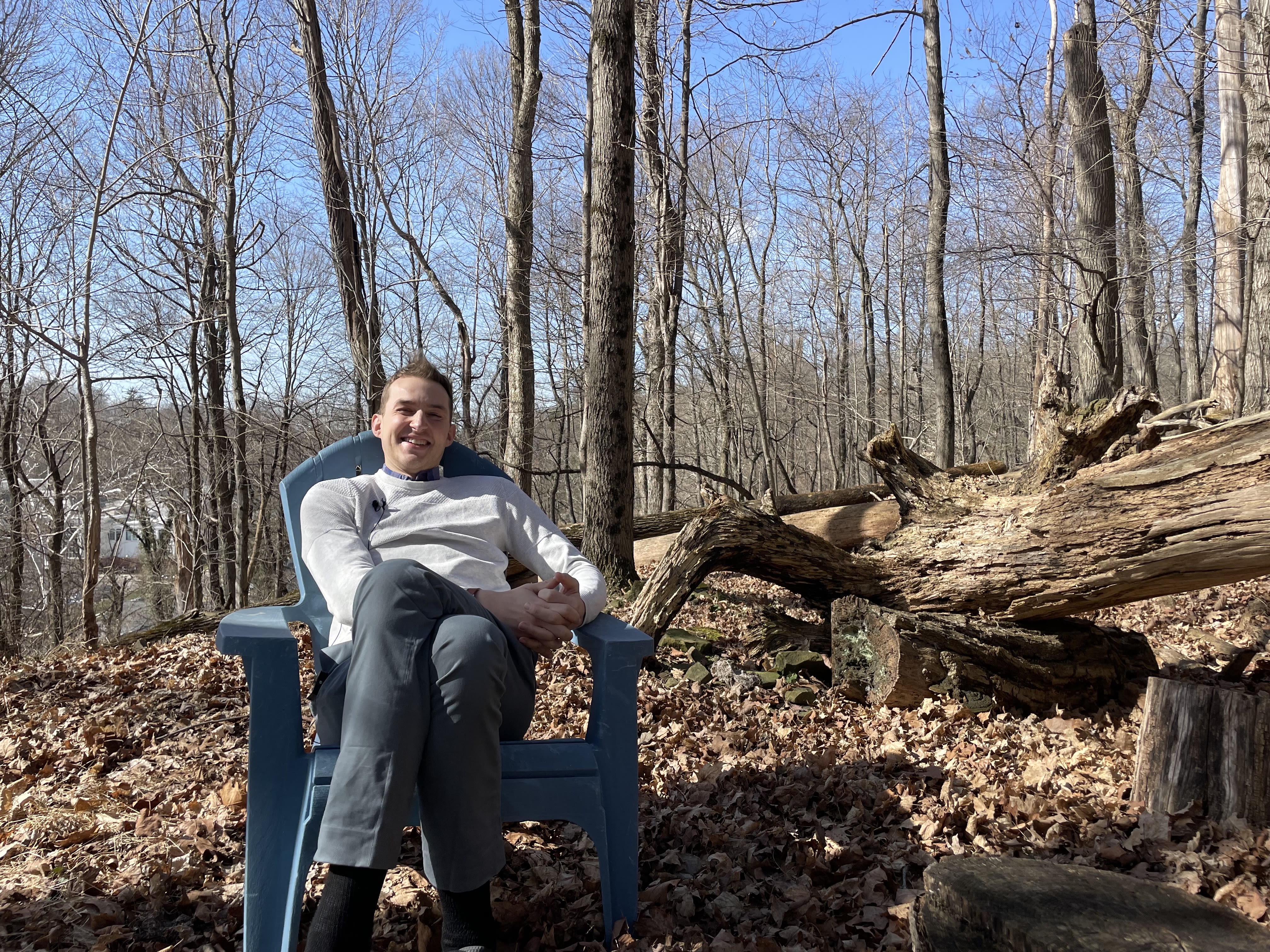
Pam walks along Racoon Creek. She scans where rocks jut from the soft mud, as glass-like ribbons of water spill over and downstream. The birds in the trees sing.
It’s not long before something in the ground catches her eye—a fragment of green poking through the dark brown. She sticks her hand in the soil, and unearths the foreign object. It’s a thick piece of glass about the size of her palm, most likely the lip of a jug.
Pam washes it off in the creek. She admires the way that nature can transform something forgotten and unwanted into something so beautiful.
“Spending time outside goes back to the heart of who I am and how I grew up.”
Pam grew up in a rural part of New Hampshire with a river running through her backyard. From a young age she became enamored with the sounds of running water. When she and her husband moved to Granville in 1997, and she discovered that Raccoon Creek could be heard from their porch, she was elated.
“Spending time outside goes back to the heart of who I am and how I grew up,” Pam tells me.
But Pam’s obsession with nature really took off during the pandemic when she discovered that there was sea glass in Lake Erie. Without much else to do, she got in her car and drove two hours to Cleveland. She began making the trek every weekend, bringing back giant shards of green and blue frosted glass, which she collected in massive jars.
“Apparently my son and husband had a conversation about whether I’m a hoarder or not,” Pam says, motioning to one of her jars sitting on the table in front of us. There are at least ten of these jars scattered around the library, each filled to the top with an assortment of weathered pieces she’s found over the last three years.
It’s a habit; one that began during a very hard time.
In December of 2019, Pam’s brother, Danny, was diagnosed with cancer.
“When Danny told me that he was given three to five years,” she said, “that was devastating because he’s my guy.”
Pam was close with all of her siblings growing up. The four of them would run around their family’s property–splashing in the river and dirtying their clothes. She and Danny in particular shared a deep connection with nature.
“He said to me one of the times I visited him, ‘I would love nothing more than to be able to go sit in a tree stump right now and just hang out,’ but at that point he couldn’t even walk.”
Whenever Pam found the top half of a bottle or saw a baby deer crossing a river, she texted Danny. It was a way for him to be there with her.
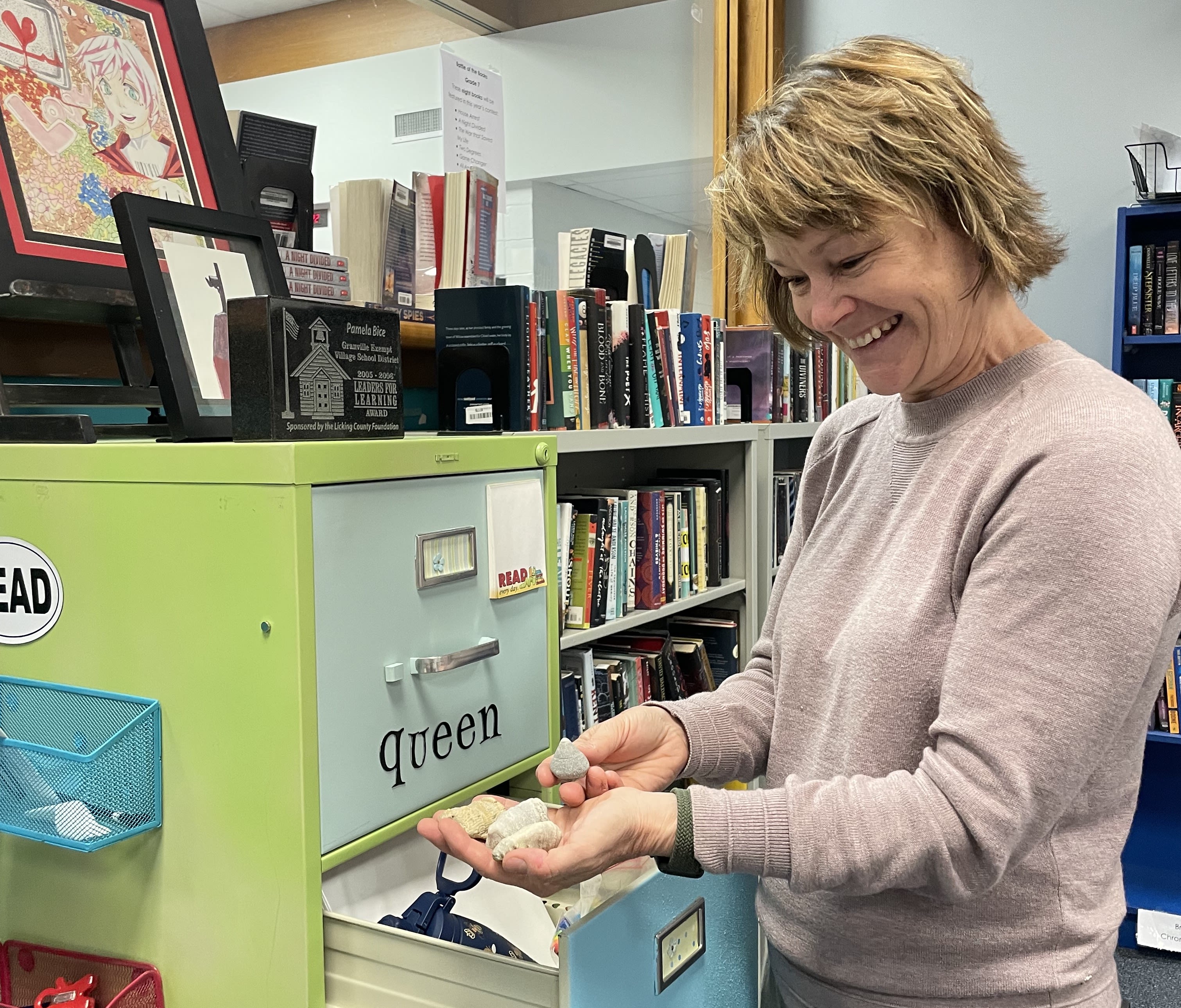
The sun rises over the horizon, illuminating the treetops in golden light. October has just begun in Ohio and the earth is already layered in a blanket of red and orange. A gust of wind pushes from the North, sending fallen leaves back into the air where they float with ease. Pam stands behind her car’s open trunk, pumping her inflatable kayak.
“It’s too cold to be out there!” a lady says half joking, half concerned as she walks by.
“Once I start paddling I’ll warm right up,” Pam responds.
She pushes off the edge of the stream and glides through the water. The dewy grass hills that border the river glisten under the early morning sun. Pam pulls out her phone, snaps a photo and sends it to Danny. She was on her way to see him in upstate New York when he called and told her he might have COVID. So, she pulled over on the side of the road in Northern Ohio and mapped herself to a nearby body of water.
Bathing...in the forest?
When our problems go beyond daily stress, and a quick moment in nature isn't enough, can we look deeper into the natural world for the answers we seek?
In this mini documentary, I follow along an immersive forest bathing experience to uncover some of the healing elements that surface when we take the time for a long pause in nature.

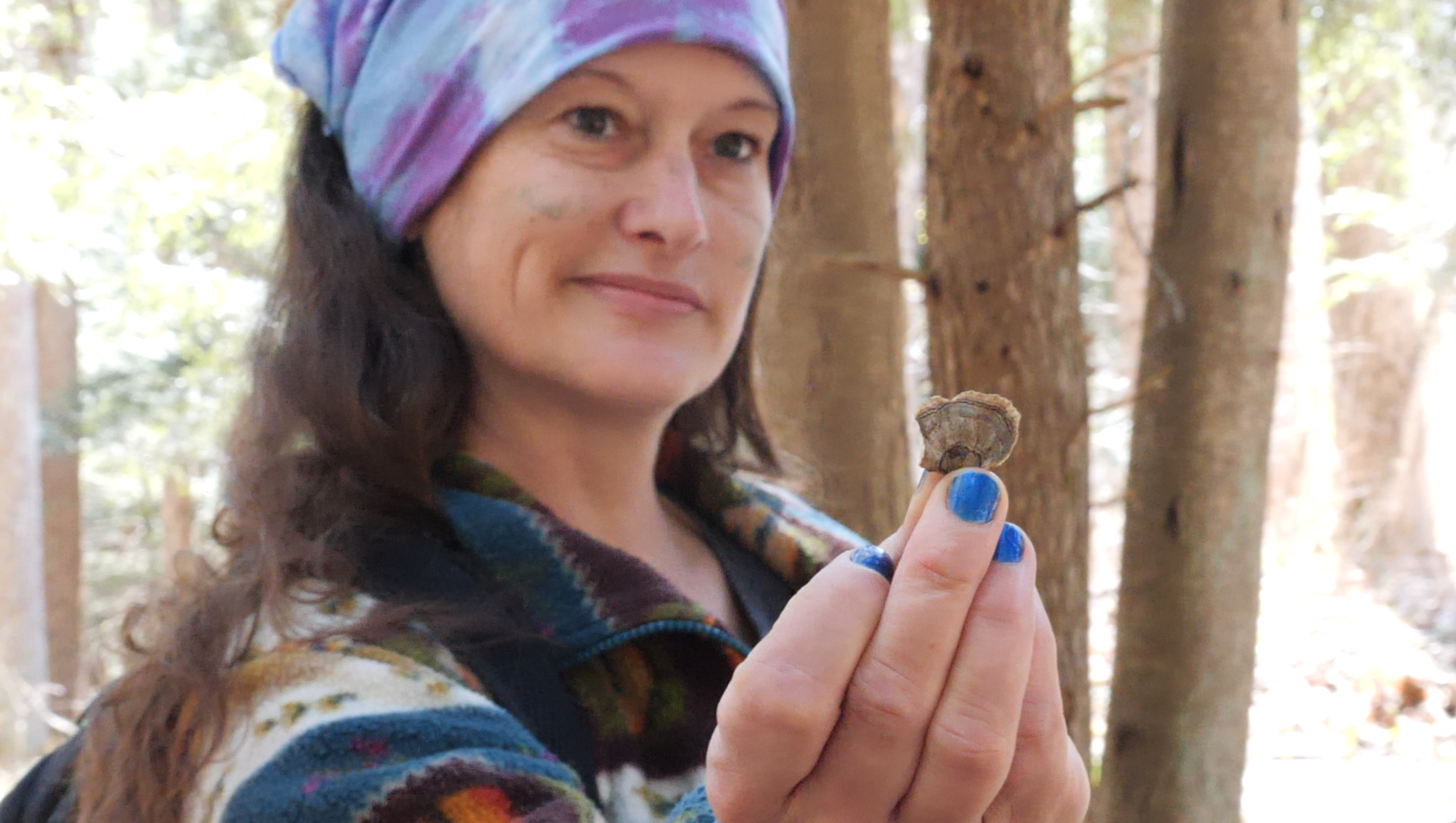



It was a frigid February morning when Pam received a phone call from her sister-in-law. The voice on the other end trembled, struggling to speak the words into existence.
“Danny has three to six months.”
Pam recalls getting a rental house in the woods with her two other siblings to process the news. There was a stream near the property and, although it was the dead of winter, she sat there and let the sound of running water soothe her racing mind. She searched for glass along the stream bank and cherished the pieces she found—they were broken and weathered and beautiful.
The three of them spent all their time outside, gliding across a nearby pond and kicking rocks back and forth to each other. Pam said she felt like a kid in those moments. Nature brought her a sense of solace.
When Danny died in July of this year, Pam was destroyed. She said there wasn’t a day in the following six months where she didn’t cry. She wanted nothing more than to have one last moment with him, just the two of them spending time together outside.
Pam still talks to Danny. When she’s in her kayak and the light catches off a ripple of water she knows that he is there. It is in those moments of solitude that she feels closest to him. When she can forget about the rest of the world and be a part of something bigger than herself.
“I’m outside, I’m in nature, I hear birds, I hear water. There’s nothing better than that. And so that definitely is my therapy.”
People have called Pam a “crazy lady” for spending all her time alone in nature. Colleagues, friends, neighbors—it seems like everyone has an opinion about her outdoor endeavors. Even her husband worries.
“He gets really nervous about it. Everything you read says that you should never kayak alone and I don’t have anybody to go with. So I’m going, instead of not going,” Pam says with a shrug.
Rachel and Stephen Kaplan, professors of psychology at Michigan University, created the foundation of environmental psychology. Their research illuminates the concept of “wholeness” or “oneness” that people experience by spending time in the wilderness. The Kaplans reveal new ideas about human motivations and priorities for engaging with natural environments.
“That’s what I try to explain to people,” Pam says, “I’m outside, I’m in nature, I hear birds, I hear water. There’s nothing better than that. And so that definitely is my therapy.”
In April, when Pam almost drowned crossing a river, she knew that she needed to go back into the water soon after. She said that she didn’t want the experience to taint the thing she relied on most. She couldn’t let fear keep her from the thing she needed to survive. So, the next day she went in the river, still alone, still with some fear. When she passed by the place where it happened she felt her body tense up for just a moment, but then she was present once again, embraced by her surroundings.
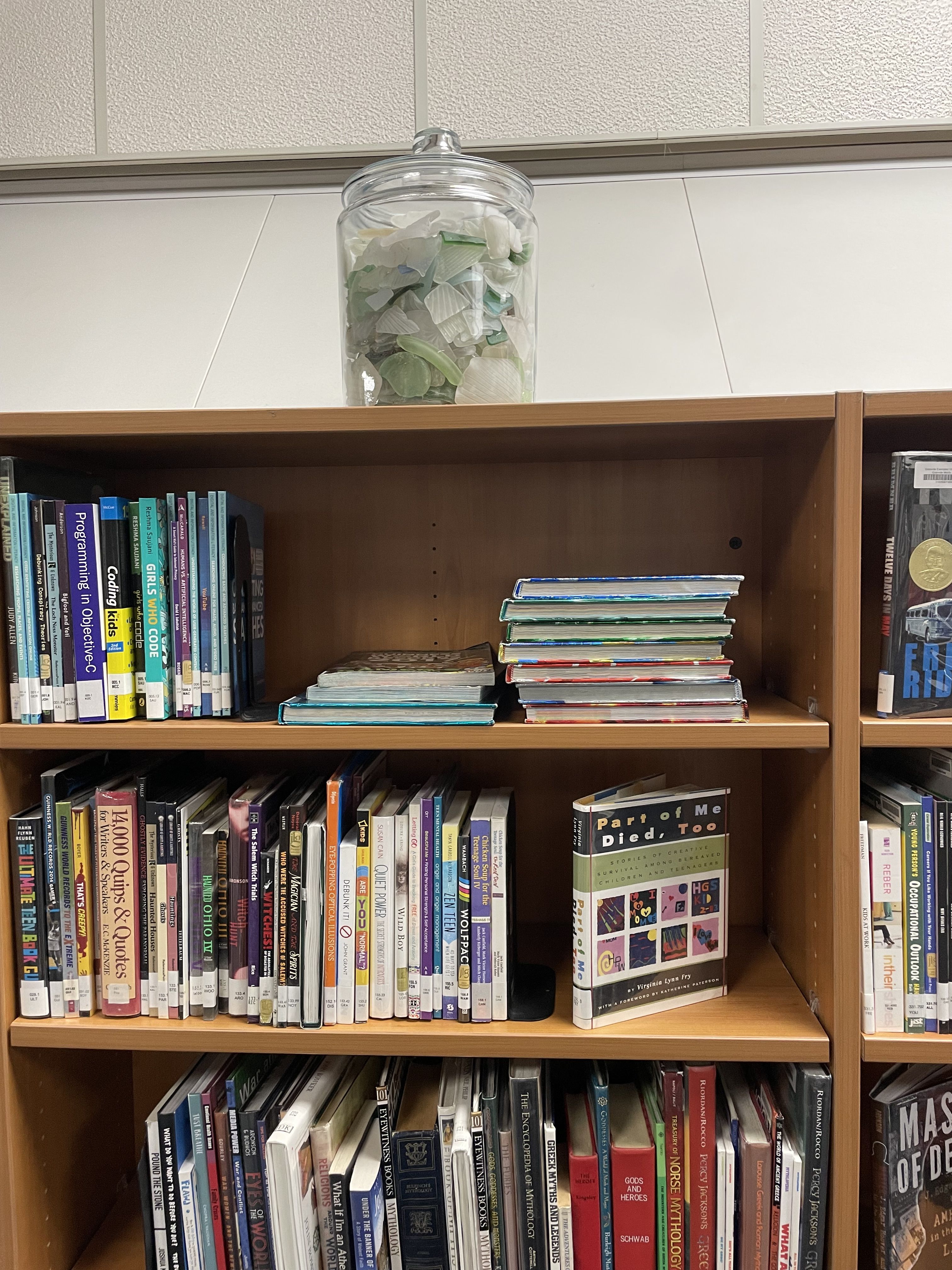
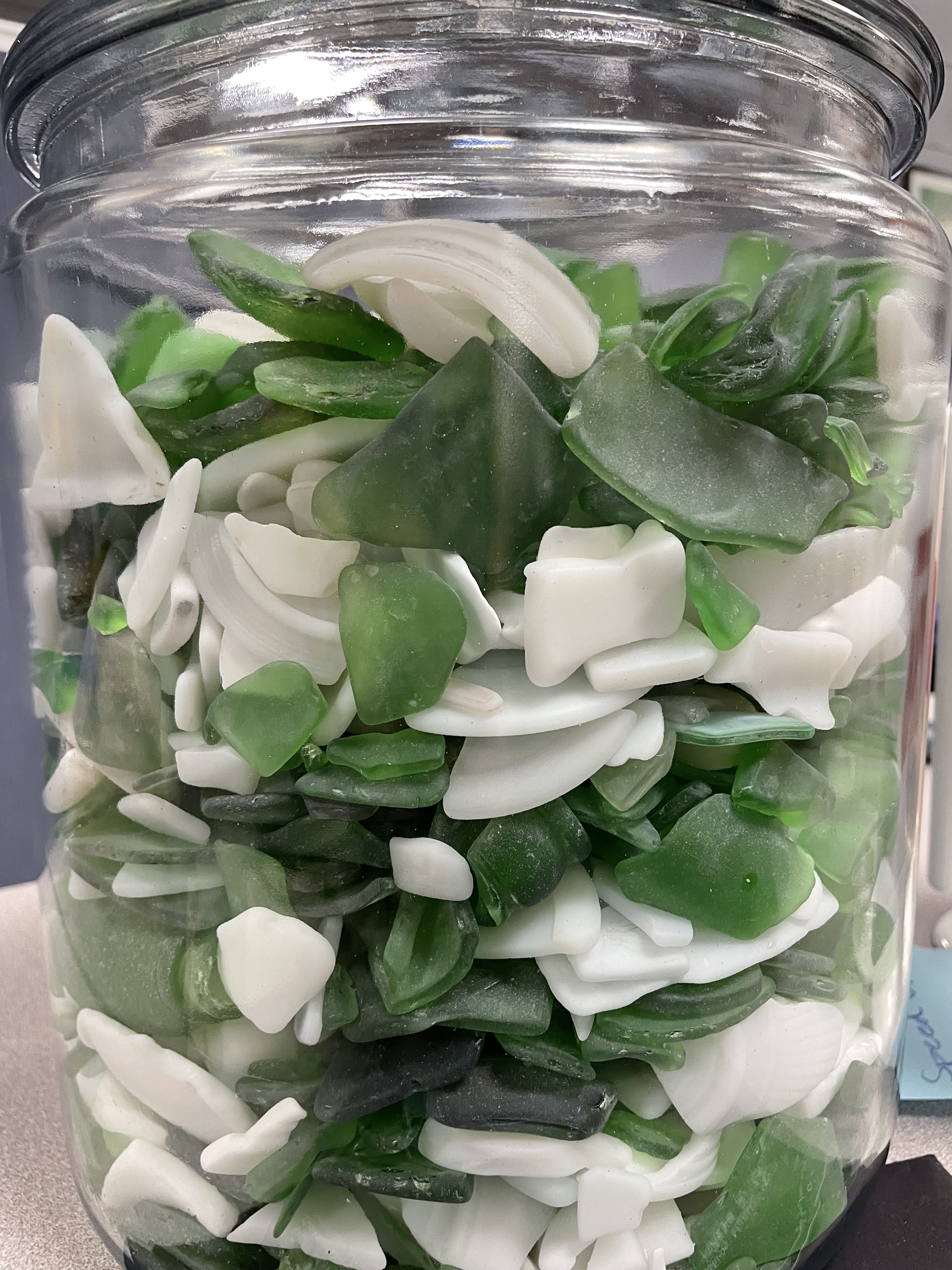
The bell rings.
“Bye guys!” Pam says, waving to her students.
The library is still for a moment.
Pam gets up from her chair and takes me to one of her jars of sea glass. It’s a vertical mosaic of green and blue and white. Some are small and ribbed while others are big and polished. I imagine Pam finding each one. I can see her on the shores of Lake Erie for the first time, filling up her backpack with joy as the sun begins to set.
Pam insists on giving me the jar. It’s the one with the lip of the jug she found in Raccoon Creek. She says that she likes to give her glass to people because for her it’s never been about collecting things, it’s been about finding something. When I ask Pam what she’s searching for she pauses for a moment.
“It’s really about me finding peace in myself,” she says, reaching into the jar and pulling out a fistful of glass. “At the end it’s just you, no matter what, it’s just you.”
Pam looks down at the sea glass in her hand with a grin before placing it back into the jar.
